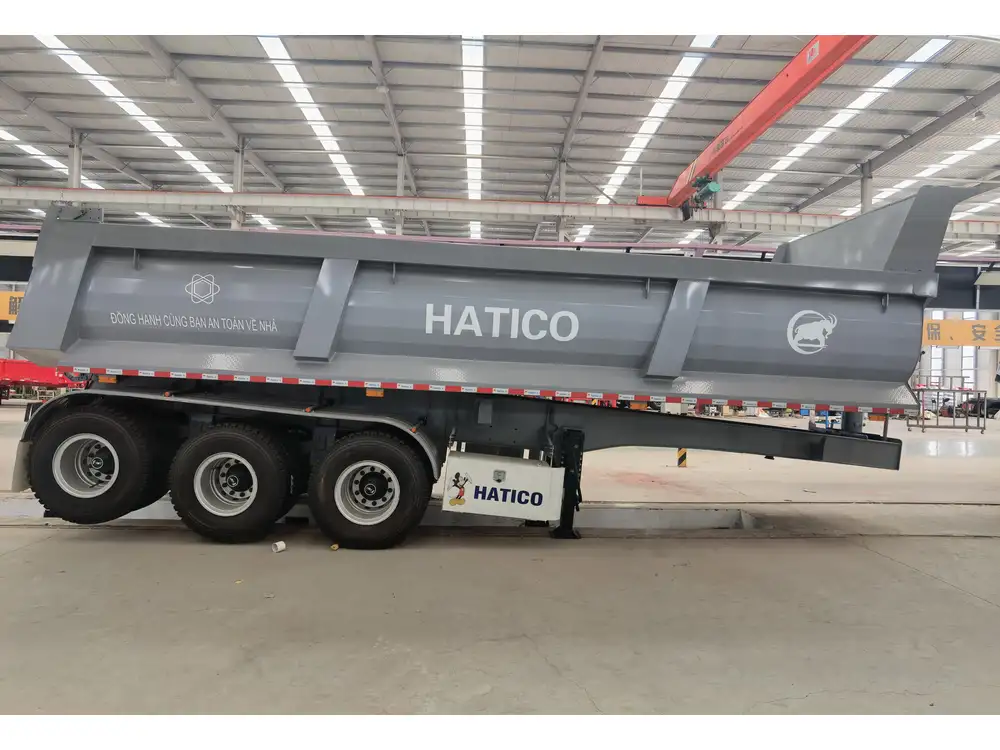Understanding how much feed can fit in a semi-trailer is essential for efficient logistics in the agricultural sector, especially for farmers and distributors looking to optimize transportation costs. Whether you’re hauling hay, grains, or mixed feeds, accurate calculations and knowledge about trailer specifications play a crucial role in ensuring you maximize payload while complying with weight regulations. In this article, we will explore the various dimensions and capacities of semi-trailers used for transporting feed, how load types affect capacity, and state regulatory considerations for transport.
Semi-Trailer Basics: Dimensions and Capacity
1. Understanding Trailer Dimensions
Semi-trailers come in various dimensions and configurations. The most common types used for transporting feed include:
- Standard Dry Van Trailers: Typically 48 to 53 feet long with a height of about 13.5 feet.
- Flatbed Trailers: Commonly 48 to 53 feet long; flatbeds provide flexibility for loading various types of feed.
- Tanker Trailers: Used for liquid feed products and come with varying capacities, generally between 5,000 to 10,000 gallons.
- Dump Trailers: Designed to allow semi-automated unloading of certain types of feed, especially bulk materials.
| Trailer Type | Length (ft) | Height (ft) | Width (ft) | Average Capacity (Cubic Feet) |
|---|---|---|---|---|
| Dry Van | 48 – 53 | 13.5 | 8.5 | 2,700 – 3,800 |
| Flatbed | 48 – 53 | 5 | 8.5 | Varies by cargo type |
| Tanker | 40 – 50 | 10 – 12 | 8 | 5,000 – 10,000 gallons |
| Dump | 40 – 48 | 6 – 10 | 8 | Varies by material |

2. Calculating Cubic Capacity
To determine how much feed can fit in a semi-trailer, we must look at the cubic capacity of the trailer and the density of the feed being transported.
Cubic Feet Calculation:
Cubic feet can be calculated with the formula:
For instance, a standard 53-foot dry van trailer has a volume of:
[ 53 \, \text{ft} \, \times 8.5 \, \text{ft} \, \times 13.5 \, \text{ft} = 6,308.25 \, \text{cubic feet} ]Load Density: Different types of feed have varying densities. For example:
- Hay: Approximately 7 to 10 pounds per cubic foot.
- Corn Grain: About 56 pounds per cubic foot.
- Soybean Meal: Roughly 40 pounds per cubic foot.
3. Example Calculations for Different Feeds
| Feed Type | Density (lbs/cubic ft) | Capacity (cubic ft) | Maximum Payload (lbs) | Number of 1000 lb Loads |
|---|---|---|---|---|
| Hay | 9 | 6,308.25 | 56,773 | 56 |
| Corn Grain | 56 | 6,308.25 | 353,619 | 353 |
| Soybean Meal | 40 | 6,308.25 | 252,330 | 252 |
From the above table, it is evident that corn grain, due to its higher density, allows for a significantly greater payload compared to hay.
Factors Influencing Load Volume

1. Type of Feed
Different types of feed exhibit distinct physical properties, influencing how much can fit in a semi-trailer. Bulk materials might settle or compress during transport, while loose materials may fill the space less efficiently.
- Compressed Bales of Hay: These occupy less volume than loose hay.
- Granular Feeds: These settle easily and can fill gaps between cargo space more effectively.
2. Packaging
Packaged feed (e.g., bags or containers) occupies more space compared to bulk feed due to air gaps. When calculating load capacity, consider packaging dimensions and how they affect overall volume.
3. Legal and Safety Restrictions
Regulations often dictate not only the maximum weight but also the dimensions of loads. For example, the Federal Motor Carrier Safety Administration (FMCSA) regulates weight limits by state, which can affect overall loading calculations.

4. Regional Considerations
Always account for regional regulations that dictate maximum weight limits:
- Interstate weight limits: Often, the maximum weight for semi-trailers is 80,000 pounds, including the weight of the trailer and the truck.
- State-specific adjustments: Some states allow higher weight limits for specific cargo types or configurations.
Strategic Packing Techniques
1. Maximizing Volume Efficiency
To ensure your semi-trailer utilizes available space to its fullest capacity, consider the following strategies:
- Layering Delivery: For bulk materials, ensure that the distribution of weight is even across the trailer.
- Compression Methods: Use compressed bales or liquid forms of feed that can be tightly secured.

2. Load Distribution
Proper weight distribution prevents trailer sway and maintains control, especially on winding roads. Follow these guidelines:
- Place heavier items near thetractor unit.
- Balance weight on both sides of the trailer.
Environmental Considerations
1. Environmental Impact of Freight Transport
Understanding the ecological impact of transporting feed is crucial. Emissions from transport add to the carbon footprint and affect sustainability. Strategies to mitigate this include:
- Utilizing fuel-efficient vehicles.
- Planning optimized routes to minimize distance traveled.

2. Waste Management
Proper management of packaging and spillage is also important. Explore reusable packaging solutions to minimize waste and reduce costs.
Conclusion
In determining how much feed can fit in a semi-trailer, efficiency, safety, and regulations converge. Calculating capacity requires an understanding of trailer dimensions, feed densities, and effective packing techniques. Each type of feed and its unique properties must be considered along with local transportation regulations to optimize loading practices for semi-trailers.
For those in the agricultural sector, maximizing load efficiency not only reduces transportation costs but also enhances sustainability. Whether it involves intricate calculations based on specific feed types or implementing strategic packing techniques, awareness of all variables will ensure your operations run smoothly and profitably.
If you have additional questions on semi-trailer specifications or want a tailored consultation for your poultry, livestock, or feed transportation needs, reach out. We aim to support your operational requirements with expertise in manufacturing and optimizing semi-trailers to suit your needs.



